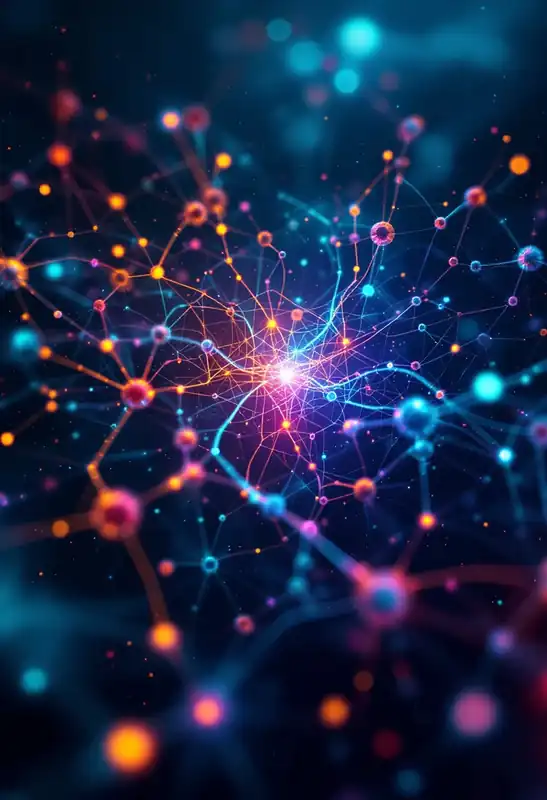John Mccarthy
(59 articles)
Lambda Calculus
A formal system in mathematical logic and computer science for expressing computation based on function abstraction and application.
Generality: 500

Universality
Concept that certain computational systems can simulate any other computational system, given the correct inputs and enough time and resources.
Generality: 941

ANN
Artificial Neural Networks
Artificial Neural Networks
Computing systems inspired by the biological neural networks that constitute animal brains, designed to progressively improve their performance on tasks by considering examples.
Generality: 875

NLP
Natural Language Processing
Natural Language Processing
Field of AI that focuses on the interaction between computers and humans through natural language.
Generality: 931

Natural Language Problem
Challenges encountered in understanding, processing, or generating human language using computational methods.
Generality: 875

Task Environment
Setting or context within which an intelligent agent operates and attempts to achieve its objectives.
Generality: 760

Knowledge Representation
Method by which AI systems formalize and utilize the knowledge necessary to solve complex tasks.
Generality: 890

Symbolic Computing
A paradigm in AI that uses symbolic representations of problems and logic-based reasoning to perform computational tasks and solve complex problems.
Generality: 795

Human-Level AI
AI systems that can perform any intellectual task with the same proficiency as a human being.
Generality: 945

Symbolic AI
Also known as Good Old-Fashioned AI (GOFAI), involves the manipulation of symbols to represent problems and compute solutions through rules.
Generality: 830

AGI
Artificial General Intelligence
Artificial General Intelligence
AI capable of understanding, learning, and applying knowledge across a wide range of tasks, matching or surpassing human intelligence.
Generality: 905

FSA
Finite State Automata
Finite State Automata
Computational model that processes input sequences and transitions between a finite number of states according to a set of rules, typically used for recognizing patterns or designing digital circuits.
Generality: 760

Heuristic Search Techniques
Methods used in AI to find solutions or make decisions more efficiently by using rules of thumb or informed guesses to guide the search process.
Generality: 878

Autonomous Agents
Systems capable of independent action in dynamic, unpredictable environments to achieve designated objectives.
Generality: 875

Search
The process within AI of exploring possible actions or solutions in order to achieve goals or solve problems.
Generality: 890

Memory Systems
Mechanisms and structures designed to store, manage, and recall information, enabling machines to learn from past experiences and perform complex tasks.
Generality: 790

Internal Representation
The way information is structured and stored within an AI system, enabling the system to process, reason, or make decisions.
Generality: 845

Machine Understanding
Capability of AI systems to interpret and comprehend data, text, images, or situations in a manner akin to human understanding.
Generality: 828

Satisfiability
The problem of determining if there exists an interpretation that satisfies a given logical formula.
Generality: 775

Agent
System capable of perceiving its environment through sensors and acting upon that environment to achieve specific goals.
Generality: 790

CLI
Command Line Interface
Command Line Interface
Text-based user interface used to interact with software or operating systems through commands, rather than graphical elements.
Generality: 860

Expert System
Computer program designed to mimic the decision-making abilities of a human expert in a specific domain.
Generality: 765

GOFAI
Good Old-Fashioned AI
Good Old-Fashioned AI
Traditional approach to AI that relies on symbolic reasoning, logic, and rule-based systems to simulate intelligent behavior.
Generality: 815
Silicon-Based Intelligence
Concept of artificial intelligence systems that operate on silicon-based hardware, contrasting with biological, carbon-based forms of intelligence such as humans.
Generality: 777

Polymorphism
Ability of objects to take on many forms, allowing methods to perform differently based on the object that invokes them.
Generality: 615

Frame Problem
Challenge in AI of representing and updating the effects of actions in a dynamic world without having to explicitly state all conditions that remain unchanged.
Generality: 625

Hierarchical Planning
Approach to solving complex problems by breaking them down into more manageable sub-problems, organizing these into a hierarchy.
Generality: 845

NLU
Natural Language Understanding
Natural Language Understanding
Subfield of NLP focused on enabling machines to understand and interpret human language in a way that is both meaningful and contextually relevant.
Generality: 894

Type System
A framework within which types are assigned to various constructs in computer programs, enhancing code reliability and safety.
Generality: 675

Admissible Heuristic
A heuristic is considered admissible if it never overestimates the cost of reaching the goal in search algorithms, ensuring an optimal solution.
Generality: 575

Forward Chaining
An inference method used in AI, particularly in rule-based systems, that derives conclusions by iteratively applying rules to known data until a goal is reached.
Generality: 596

Production System
A framework used in AI for automated problem-solving that consists of a set of rules and data, enabling systematic exploration of possible actions to achieve a goal state.
Generality: 725

CSPs
Constraint Satisfaction Problems
Constraint Satisfaction Problems
Mathematical problems defined by a set of variables, a domain of values for each variable, and a set of constraints specifying allowable combinations of values.
Generality: 800

Abstract Data Type
A conceptual model for data structures that defines data types by their behavior rather than their implementation.
Generality: 700

Inference Engine
Software component that applies logical rules to a knowledge base to deduce new information or solve specific problems.
Generality: 675

Program Induction
A process in AI where computers generate, or 'induce', programs based on provided data and specific output criteria.
Generality: 785

Dualism
Theory or concept that emphasizes the division between symbolic (classical) AI and sub-symbolic (connectionist) AI.
Generality: 830

Reasoning System
Software entities designed to emulate human reasoning processes by drawing logical inferences from available data or known facts.
Generality: 775

AI Winter
Periods of reduced funding and interest in AI research and development, often due to unmet expectations and lack of significant progress.
Generality: 525

Commonsense Reasoning
The ability of AI systems to make presumptions about the type of
Generality: 775

Function Approximator
Computational model used to estimate a target function that is generally complex or unknown, often applied in machine learning and control systems.
Generality: 806

State Representation
The method by which an AI system formulates a concise and informative description of the environment's current situation or context.
Generality: 682

Autonomous Learning
Systems capable of learning and adapting their strategies or knowledge without human intervention, based on their interactions with the environment.
Generality: 870

AI Effect
Phenomenon where once an AI system can perform a task previously thought to require human intelligence, the task is no longer considered to be a benchmark for intelligence.
Generality: 770

Sandbox
A controlled, isolated testing environment used to execute, test, or simulate programs and code without affecting the main system.
Generality: 500

Superintelligence
A form of AI that surpasses the cognitive performance of humans in virtually all domains of interest, including creativity, general wisdom, and problem-solving.
Generality: 850

Control Problem
Challenge of ensuring that highly advanced AI systems act in alignment with human values and intentions.
Generality: 845

Narrow AI
Also known as Weak AI, refers to AI systems designed to perform a specific task or a narrow range of tasks with a high level of proficiency.
Generality: 760

Cognitive Computing
Computer systems that simulate human thought processes to solve complex problems.
Generality: 900

HITL
Human-in-the-Loop
Human-in-the-Loop
Integration of human judgment into AI systems to improve or guide the decision-making process.
Generality: 665

AI Failure Modes
Diverse scenarios where AI systems do not perform as expected or generate unintended consequences.
Generality: 714

Autonomous Reasoning
Capacity of AI systems to make independent decisions or draw conclusions based on logic or data without human intervention.
Generality: 850

Query
Request made to a data management system or AI model to retrieve information or execute a command based on specific criteria.
Generality: 825

1-N Systems
Architectures where one input or controller manages multiple outputs or agents, applicable in fields like neural networks and robotics.
Generality: 790

Instruction Following Model
AI system designed to execute tasks based on specific commands or instructions provided by users.
Generality: 640

Shared Awareness
Collective understanding and perception of information among multiple agents, both human and machine, in a given environment.
Generality: 500

Instruction-Following
Ability to accurately understand and execute tasks based on given directives.
Generality: 725

Self-Correction
An AI system's ability to recognize and rectify its own mistakes or errors without external intervention.
Generality: 815

Agentic AI Systems
Advanced AI capable of making decisions and taking actions autonomously to achieve specific goals, embodying characteristics of agency and decision-making usually associated with humans or animals.
Generality: 775